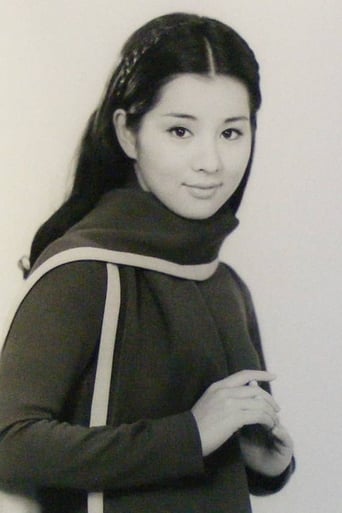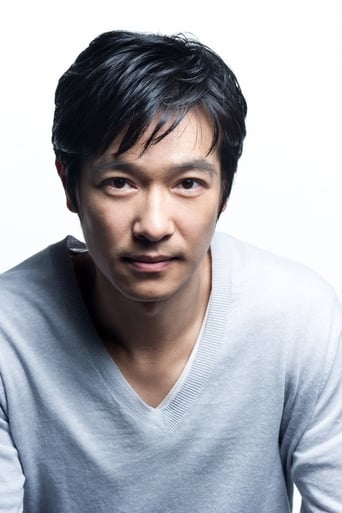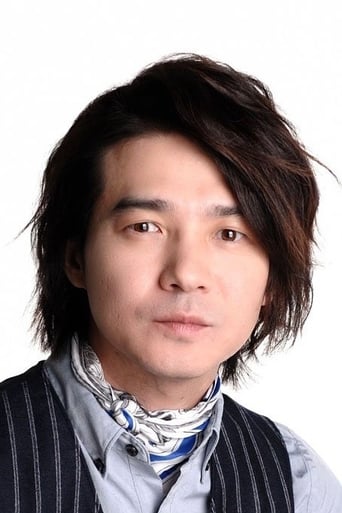John K. Concas
A full-of-value epic story about the life of Shakyamuni Budda, a biographical personal version enjoyable both for who has already read the Osamu's manga and for who has not done. Good music, big atmosphere, optimal graphics. I bought the DVD of this first movie and I watched the second movie of the trilogy, and I am now waiting for the third one. Just a pity that it is available only in few languages. Not exactly as in the manga, the movie wants to bring to the screen an emotional show made by myth, action, spirituality and good dialogues. A great manga epopee translated in a digital alive creature. Definitively suggested for adults and children.
Brian Camp
OSAMU TEZUKA'S BUDDHA: THE GREAT DEPARTURE (2011) is an animated historical spectacle based on Osamu Tezuka's manga, "Buddha," which began publication in 1972. On the surface, the film is quite a lavish and stirring historical epic, complete with sprawling battle scenes and abundant combat and bloodshed, all set against a backdrop of warring states in the caste-bound India of 500 B.C. Clearly, an ample budget was provided to create realistic design and fluid animation, and a veteran anime director, Kozo Morishita (CALL OF THE WILD, SAINT SEIYA), assigned to helm the project, which is planned as the first part of a trilogy. The film opens with the birth of a prince in the kingdom of Shakya and the declaration of an ascetic monk attending the birth that the boy, named Siddhartha, is destined to become "king of the world." The film follows the boy as he grows up and begins to question his pampered life in court and the teachings of the Brahmins. He witnesses the death of a classmate and wants to know why we die and what happens after death. He meets a lower-caste girl named Migaila, who spirits him away from the palace to travel through villages and countryside to see disease, poverty, hunger and the harsh brutality meted out to the poor and low-born. Reluctantly, Siddhartha rises up in court and studies the martial arts and even leads his army into battle. But he is so disgusted at the carnage that he soon makes a life- and history-changing decision.Meanwhile, another set of characters is interwoven into the fabric of the story. A slave boy named Chapra and his mother are rescued from bondage by a strange little boy named Tatta who has the power to send his soul into another living entity, so that he can see through the eyes of an eagle or travel great distances in the body of a horse. They are joined by a monk, Naradatta, sent by his master to look for a great man destined to be born soon among these people. At one point, Chapra rescues General Budai of the army of Kosala after the army has just destroyed the village where Tatta was living and killed all its residents, including Tatta's mother and sister. Chapra's plan is to rise up as the adopted son of Budai so he can be in a position to take care of his mother and Tatta. Chapra eventually leads the army that confronts Siddhartha.It's all very beautifully animated and slickly produced, with a moving, full-bodied orchestral score by composer Michiru Oshima (THE WEATHERING CONTINENT, "Legend of Crystania"). There is plenty of action and a steady stream of breathtaking images. However, this isn't what Osamu Tezuka (who died in 1989) had intended. Tezuka's work had a spark and fury motivated by his overarching theme of the sanctity of life and the preservation of it. Young Siddhartha's anguish and sensitivity are at the heart of the story and he shows great courage in his defiance of the customs and preconceptions of the culture into which he was born. The film version doesn't adequately capture this. For instance, there's a long sequence in the manga where Siddhartha sits outside on a stone platform atop a castle tower for days on end, refusing to speak or move or eat, despite the best efforts of his father, his wife and a pack of Brahmins to get him to come down. Like a lot of sequences in the manga, it's not in the film. I understand the need to condense an epic work when adapting it for anime, but the film seems to have consistently cut out the heart of the work, preferring spectacle over introspection.Also, the film does some very strange things with the timeline of the story. In the manga, all the adventures with Tatta, Chapra and Naradatta take place while Siddhartha is very young. When Siddhartha finally meets Tatta in the manga (in Vol. 2), an encounter that's not in the film, Tatta is a grown man. In the film, Tatta and Chapra disappear from the narrative for a long stretch, during which Siddhartha grows from infancy to young manhood, a period of at least 15 years. Yet when we finally see Tatta again, he's still a little boy and Chapra and his mother have hardly aged at all either. This is quite confusing and it speaks to severe structural problems in the adaptation.The film does expand on a notable sequence in the manga in which Siddhartha meets the thief girl, Migaila. More time is spent in the film on developing their relationship, so that when they are forcibly pulled apart, it has a much greater emotional impact than it did in the manga. (Tatta was in that sequence in the manga, but not in the film.)The events of the film are pretty much covered in the first two volumes of the manga. I recommend the manga to interested viewers in order to better experience the force of Tezuka's ideas about life, death and renewal, a force not often captured in film adaptations of Tezuka's work. Still, I must say I was happy to have had the opportunity to see this film on the big screen in a 35mm print at Japan Society in Manhattan as part of the Japan Cuts festival (in conjunction with the New York Asian Film Festival). It's not often we get to see a new theatrical animated feature from Japan that's not a spin-off of a TV series. And whatever the film's weaknesses, it is the kind of spectacle that Japanese animators do well, but don't often get the opportunity to undertake.






